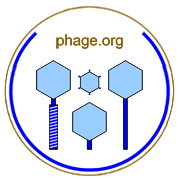

The sum of processes culminating in attachment of a phage to a bacterium (and possibly including phage nucleic acid translocation, uptake, into a bacterium's cytoplasm as well).
Narrowly defined, the term adsorption can be used synonymously with attachment but more broadly includes all of the steps associated with converting a free phage into an irreversibly bacterium-attached phage and/or phage-infected bacterium. These differences form the root of the ambiguity associated with use of the term.
See also adsorption rate constant and adsorption cofactor.
Note that the process of adsorption can be divided into movement, encounter, attachment, and irreversible attachment steps.
Typically diffusion will occur that is followed by random encounter between a phage and a potential bacterial host. If phage adsorption proteins possess sufficient affinity for phage receptors found on the host surface (adsorption affinity), then at least reversible attachment may occur.
Irreversible attachment involves stronger interactions between the virus particle and the bacterial surface as well as irreversible conformational changes in the virion that are associated with phage genome translocation into the cytoplasm of the bacterial cell.
This is the definition from Adams (1959), p. 439): "Attachment of phage particle to bacterium, irreversible unless otherwise stated."
For more on this topic, see Wikipedia, Google, and PubMed. Contact web master. Return to terms.